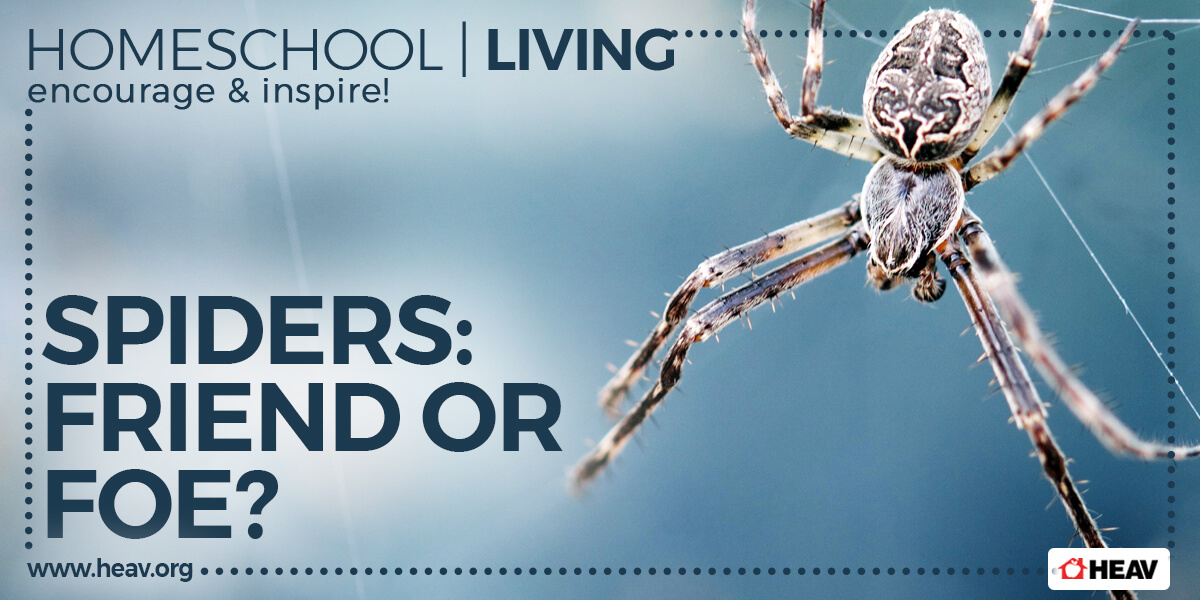Spider Science: Friend or Foe?
You’ll see plenty of spiders this time of year, both in nature, as many spiders venture out of hiding to look for mates, and in stores as “creepy” decorations. Take advantage of the plethora of visuals available for a homeschool unit study and try some fun spider science activities!
This spider web science project from Education.com gives your student the chance to be a field scientist, detective, and even a bit of a plein air artist! Students will track down and document spider webs in the wild, “capture” a web specimen, and even try their hand at creating their own web.
This fine motor activity is fun for a range of younger ages, as toddlers can use their hands to extricate the spiders, but preschoolers can practice using clothes pins or salad tongs to pinch the spiders and pull them out of the “web.” Even older students will like helping to string the web for younger siblings. This activity uses inexpensive plastic spider rings, but you and the kids could also create simple spiders with pipe cleaners or popsicle sticks to use instead.
More often than not, spiders are portrayed as creepy or dangerous, but are spiders really scary? This interesting article from Everyday Health offers some valuable insight into the value of spiders in our ecosystem while providing realistic information about your chances of encountering a truly dangerous spider.
Have you heard the quote that “you are never more than three feet away from a spider?” What about the one that “daddy long-legs would be deadly to humans if their jaws were big enough to bite humans?” Have you been repulsed by learning that the “average human swallows four spiders a year in his sleep?” Check out these and many other spider myths, and explore the validity of these claims!
This article from The Seattle Times, “Teach Kids to Respect Insects Instead of Squishing Them,” provides an unexpected example of one of the best things about homeschooling–you are responsible for how your children are taught, what they are taught, and how you demonstrate the principles. While it touches on some fascinating theories of why we almost instinctively fear spiders and insects, it emphasizes the learned reactions that we see in many everyday portrayals of the little creatures and provides some practical ways of demonstrating healthy respect for and interactions with them.
It’s so important not to stifle a child’s interest in nature–no matter how creepy-crawly, slimy, or dirty it might be! This road school blog post by a self-proclaimed arachnophobe mother offers advice for encouraging the learning at any age, cool ideas for field trips, and resources for home study and beyond!










